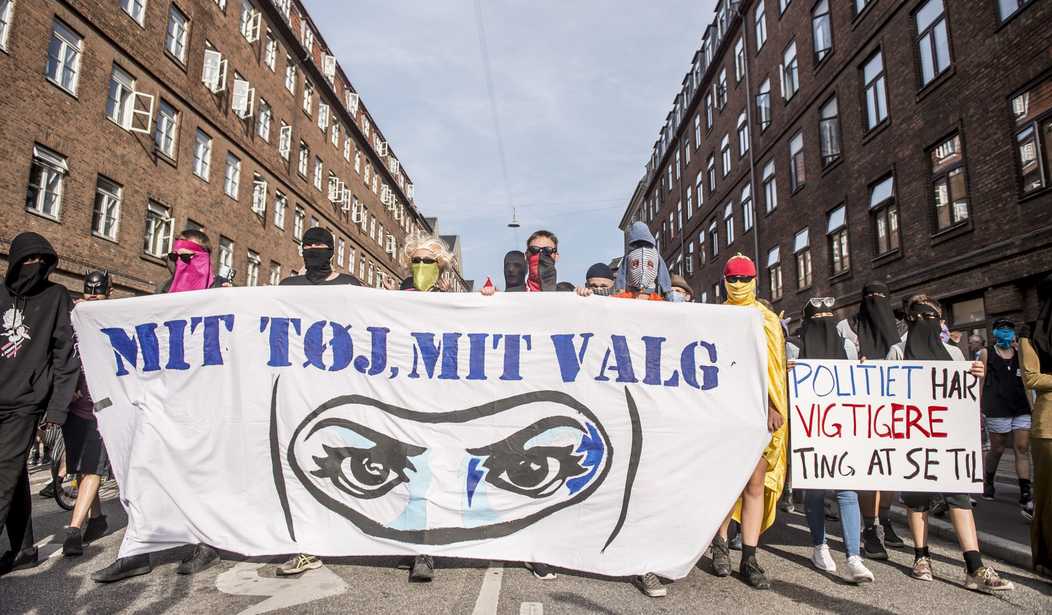It’s been quite a year in Denmark. In June, the Danish Parliament passed a law banning the burka and niqab. The media went nuts. “Slowly but surely,” warned the Independent, “Europe is undergoing a move towards restricting religious freedom for non-Christians … minorities are being treated as second-class citizens.” The Guardian headline read: “Muslims feel besieged.”
Then, this summer, Denmark introduced new laws requiring children living in Muslim enclaves to spend at least 25 hours a week taking Danish language classes and learning about Danish values. The headline in the New York Times report on this development called it “[h]arsh,” said that some Danish politicians’ description of Muslim ghettos had “become increasingly sinister,” and cited a Social Democratic member of Parliament who drew a comparison to Nazi Germany. Time’s Amro Ali, who used words like “illiberal,” “xenophobic,” and “discriminatory” to describe the policy change, also brought up the Nazis. Richard Orange of the Guardian sang the same tune.
The common theme, in short, was that these new regulations were rooted in racism. In fact, as I wrote at the time, they’re “a noble endeavor to keep a small free country from becoming part of a totalitarian caliphate.” None of these alleged journalists, I noted, had taken into account the profound challenges that have forced Denmark to take this action — such as the common European Muslim practice of sending kids “back home” for years “so that they can attend Koran schools, soak up Islamic codes of conduct, and (most important) be shielded from such abhorrent Western phenomena as individual liberty and sexual equality.”
Fortunately, the Danish government didn’t let the media propagandists stay its hand. On August 1, as I reported here at the time, the niqab and burka ban took effect, bringing Danish policy into line with that of France, Austria, and Belgium — and causing yet another round of hand-wringing by the fake-news crowd. Three days later, media around the world reported on — and of course, deplored — the first arrest under the ban. In October, Immigration Minister Inger Støjberg announced that, because of the incredibly poor results of integration efforts, Denmark would for the present not accept a single additional quota refugee. Result: still more media hysteria.
Now the Danes have done it again. On December 3, the Times ran a piece entitled “Denmark Plans to Isolate Unwanted Migrants on a Small Island.” First sentence: “Denmark plans to house the country’s most unwelcome foreigners in a most unwelcoming place: a tiny, hard-to-reach island that now holds the laboratories, stables and crematory of a center for researching contagious animal diseases.” I love it! It’s as if Denmark, in addition to trying to save itself, is determined to make heads explode throughout the international news media.
To be sure, as the Times went on to explain, these housing arrangements will be reserved only for the worst of the worst, namely “foreigners who have been convicted of crimes but who cannot be returned to their home countries.” In fact, it seems to me that these crooks are getting something of a break: they’re not being sent back to their crummy home countries (presumably because they might be subjected there to penalties of which the Danish government disapproves), but they’re not being tossed in the clink, either. Yes, once the research center evacuates the island and the detainees move in, it’ll be accessible only by ferry, and the thugs’ comings and goings will be monitored, presumably making escape a difficult proposition; but otherwise the place will in no way resemble a prison.
Not a bad deal. Yet the Times found it appropriate to assert that the 2015-16 migration surge “prompted a populist, nativist backlash” in Denmark and to suggest that the Danish government’s plans for the island might amount to “illegal confinement” in the eyes of the European Court of Human Rights. Uffe Elbæk, head of the left-wing Alternative Party, told The Local that he finds the plan “inhuman” and that if he ran the government, he’d “never force people on to a deserted island.” Well, look at it this way: once they’re there, it won’t be deserted anymore.
My own question is this: why not send them to, say, northernmost Greenland? What’s the point of a tiny country owning the biggest island in the world if it can’t get some use out of it? And if the little darlings don’t like the cold, send them to some remote location in the tropics: I hear North Sentinel Island in the Bay of Bengal is a lovely spot.
Seriously, the actions Denmark has taken this year may not amount to much, but they still put that country way ahead of most of its neighbors when it comes to dealing responsibly with Islamic immigration. The media may squawk, but when other Western European countries eventually fall to the enemy, Denmark, thanks to these and other measures, may be the last man standing.
But will it remain standing? Some observers maintain that, all these efforts notwithstanding, it’s already too late to rescue Denmark. Get this: ten years ago, the government’s statistical bureau predicted that the number of non-Western immigrants in Denmark (current population 5.8 million) would pass 340,000 in the year 2050. Guess what? Denmark has already reached that benchmark. If you include the children of those immigrants, the present figure is just a shade under 550,000. And the grandchildren (of whom there are very, very many, given that the Muslim tide began in the 1970s, and that Muslim women tend to start popping out babies when they’re barely out of childhood themselves)? Denmark doesn’t keep separate records of those kids; as Hege Storhaug notes at Rights.no, members of that third generation are registered as Danish. Although whether they think of themselves as Danish, of course, is another question — and one on which that plucky little nation’s future almost certainly hangs.









Join the conversation as a VIP Member